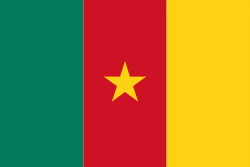Makary (Makary)
Makary is a town in Logone-et-Chari, Far North Region, Cameroon, West Africa. The town is located on the right (east) bank of a distributary of the Chari River in the delta just before it enters Lake Chad. The people are known as Kotoko, and the local language is Mpade, Fulani (Fulfulde) is the trade language. The primary economic activity was and is fishing.
Makary was part of the indigenous Sao civilisation that occupied the land south of Lake Chad from about the Sixth Century A.D. going into decline by at least the Fourteenth Century. With the decline of the Sao confederation, Makary was an independent kingdom, one of the Kotoko kingdom city-states. In the early Fifteenth Century, Makary went from being an ally of King Idris Alooma to being a part of the Bornu Empire, and soon converted to Islam. However, by the late Eighteenth Century, although nominally still part of Bornu, the city states had reasserted themselves, and by 1800 Makary had formed a federation of seven fortified towns under the prince (Mé) of Makary.
In March 1846 Umar of Borno, nominal general of the Bornu sultan Ibrahim, suffered a defeat at Kousséri by the forces of the Kingdom of Baguirmi, itself weakened by attacks from the Wadai Empire. By the 1890s Rabih az-Zubayr was able to move into the power vacuum created by these contending forces and took first Oubangui-Chari, then Baguirmi, and then in 1894 Bornu. This soon brought Makary under Rabih's control. After Rabih was killed by the French in 1900, Makary fell under the German sphere of influence.
Despite the changes in rulers and religion the culture of Makary seems to represent an uninterrupted continuation of the original Sao culture.
Makary was part of the indigenous Sao civilisation that occupied the land south of Lake Chad from about the Sixth Century A.D. going into decline by at least the Fourteenth Century. With the decline of the Sao confederation, Makary was an independent kingdom, one of the Kotoko kingdom city-states. In the early Fifteenth Century, Makary went from being an ally of King Idris Alooma to being a part of the Bornu Empire, and soon converted to Islam. However, by the late Eighteenth Century, although nominally still part of Bornu, the city states had reasserted themselves, and by 1800 Makary had formed a federation of seven fortified towns under the prince (Mé) of Makary.
In March 1846 Umar of Borno, nominal general of the Bornu sultan Ibrahim, suffered a defeat at Kousséri by the forces of the Kingdom of Baguirmi, itself weakened by attacks from the Wadai Empire. By the 1890s Rabih az-Zubayr was able to move into the power vacuum created by these contending forces and took first Oubangui-Chari, then Baguirmi, and then in 1894 Bornu. This soon brought Makary under Rabih's control. After Rabih was killed by the French in 1900, Makary fell under the German sphere of influence.
Despite the changes in rulers and religion the culture of Makary seems to represent an uninterrupted continuation of the original Sao culture.
Map - Makary (Makary)
Map
Country - Cameroon
 |
 |
| Flag of Cameroon | |
Early inhabitants of the territory included the Sao civilisation around Lake Chad, and the Baka hunter-gatherers in the southeastern rainforest. Portuguese explorers reached the coast in the 15th century and named the area Rio dos Camarões (Shrimp River), which became Cameroon in English. Fulani soldiers founded the Adamawa Emirate in the north in the 19th century, and various ethnic groups of the west and northwest established powerful chiefdoms and fondoms. Cameroon became a German colony in 1884 known as Kamerun. After World War I, it was divided between France and the United Kingdom as League of Nations mandates. The Union des Populations du Cameroun (UPC) political party advocated independence, but was outlawed by France in the 1950s, leading to the national liberation insurgency fought between French and UPC militant forces until early 1971. In 1960, the French-administered part of Cameroon became independent, as the Republic of Cameroun, under President Ahmadou Ahidjo. The southern part of British Cameroons federated with it in 1961 to form the Federal Republic of Cameroon. The federation was abandoned in 1972. The country was renamed the United Republic of Cameroon in 1972 and back to the Republic of Cameroon in 1984 by a presidential decree by president Paul Biya. Paul Biya, the incumbent president, has led the country since 1982 following Ahidjo's resignation; he previously held office as prime minister from 1975 on. Cameroon is governed as a Unitary Presidential Republic.
Currency / Language
| ISO | Currency | Symbol | Significant figures |
|---|---|---|---|
| XAF | Central African CFA franc | Fr | 0 |
| ISO | Language |
|---|---|
| EN | English language |
| FR | French language |















